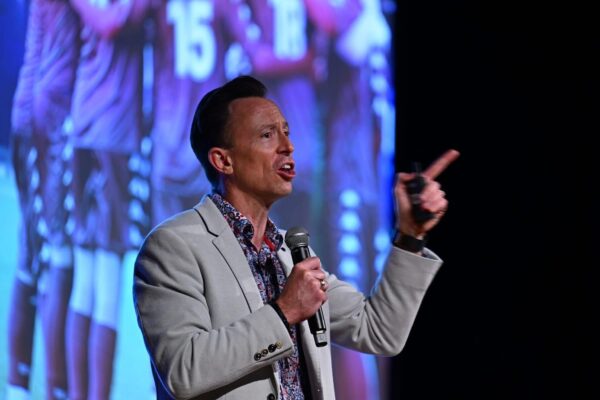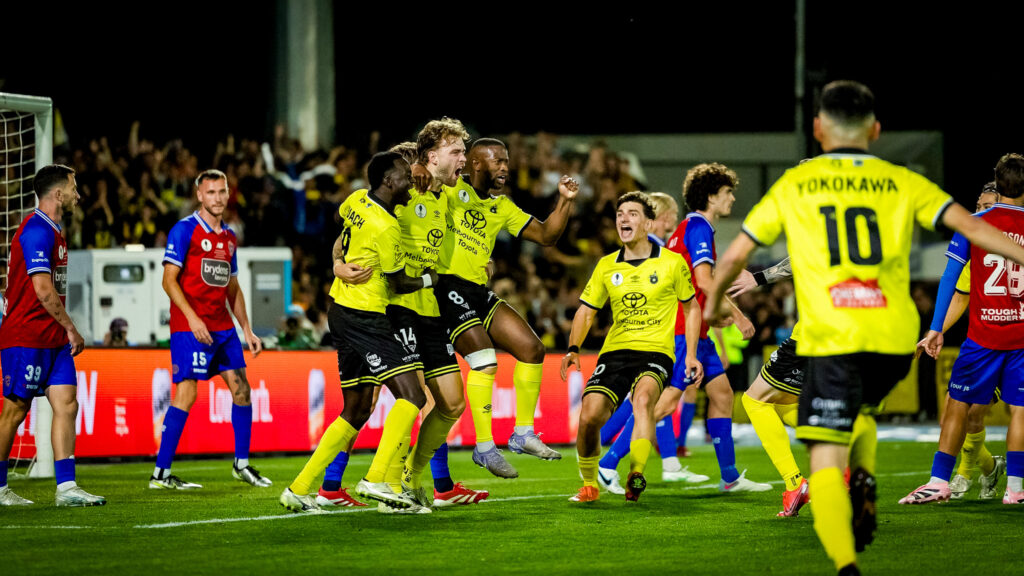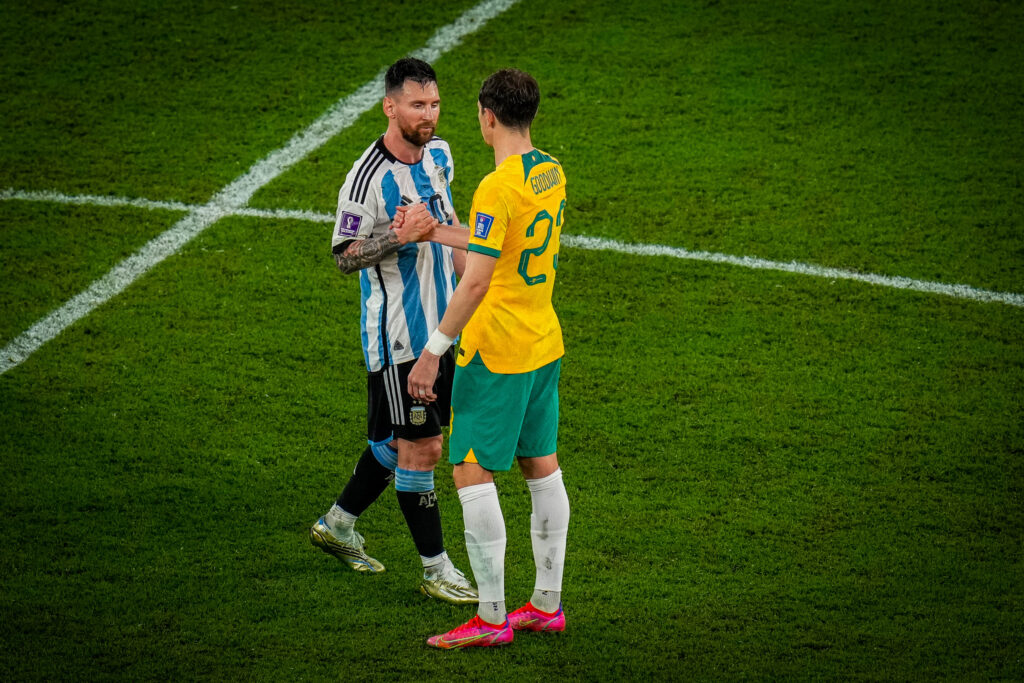
It is often said that the United States has the biggest and best sporting market in the world.
According to the latest number from Forbes, the average value of a franchise in the National Football League (NFL) is $3.48 billion USD, a 14% increase on 2020.
In the NBA, the average franchise value is $2.202 billion USD, having steadily risen year-on-year since 2015 which was the first year that the average value crept over the $1 billion USD mark.
Even in the much-maligned MLS, the average franchise value is a cool $550 million USD up from $319 million USD in 2019 – a remarkable 72% increase.
So, with such a booming sports economy on their own doorstep, why are American investors turning to European football?
That was the question The Athletic Football Podcast hosts, Mark Chapman and Matt Slater, sought to answer in the latest episode of their podcast.
In two revealing conversations with US sports investors Michael Kalt and Brett Johnson, there were some potentially interesting lessons for Australian football to learn.
Kalt, who rose to sporting fame as part of the investment group that helped transform the fortunes of the Tampa Bay Rays in the MLB, now leads consortiums investing in European football clubs with current investments in AS Nancy in France and Oostende in Belgium.
Johnson is co-owner of Ipswich Town and also the owner and director of Phoenix Rising Football Club, which plays in the second tier of US football.
So, what do they like about European football?
Why don’t they invest the same sizeable funds into MLS teams?
What can Australian football learn?
Below we highlight four key lessons.
Upside Counts
The majority of clubs that Kalt and his consortiums look at investing in are loss-making businesses.
They don’t make money.
So why, when you have significant investment capital and can invest in a booming domestic sports market, do you choose to take your money to Europe and put it in loss-making clubs?
For Kalt, there are three things a club has to have to prove its investment value.
- Asymmetric Upside via promotion or European qualification
- Room for commercial improvement
- Training profits (EG: Player Transfers)
On the first point, Kalt explains the uniqueness of promotion and relegation and continental competition created pockets of value in Europe that offered much lower costs of entry in Europe.
“Can you buy them when you’re up underlying your downsize risk, meaning you’re not paying full price for a club that is recently promoted or in the top league or coming off European competition and you’re paying full price,” he said.
“If you look at the clubs we bought, we’ve bought clubs like Nancy, historically a club that has been in Ligue 1 and bounced back and forth. It has the infrastructure of a Ligue 1 team. It should be a first division, mid-table club, so there’s headroom there and not a lot of downside risk.
“That’s the sort of situation we look for, where there is an asymmetric upside, either through promotion or European qualification in a smaller club where we think we can compete in the top four or five teams.

On what he termed, “Training Profits”, which most readers would refer to as player transfers, Kalt thinks it’s incredible that a club could generate a sizeable portion of its overall value simply by trading players.
“This is a massive mover in this,” he said.
“When you create that value in American sports, the only way to really monetize it on the player basis is to make like exchanges. To say, I have a player that has demonstrated his worth and the market will pay way more for him. He’s got three or four years left of club control … your only path to monetization is to keep that player and hope the club plays better and people show up and you generate more revenue in the stadium.
“Or you go and try and trade the player for younger, more controllable talent and hope that that talent does the same thing.
“In Europe, you create value, and the market comes to you and says ‘okay, today we’re willing to pay ‘x’ for that player, and, by the way, that ‘x’ might be some significant portion of what you played for the club!’
“That system, combined with analytics to create that value, which is how we started looking at this … is why it’s so intriguing.
“You reinvest some of that back into the club and you can reduce your downside.”
Europe’s football culture and ecosystem are, obviously, significantly more developed than that of Australia or the United States.
But what is interesting to take from the conversation is the factors that make for a worthwhile investment for Kalt and his ilk.
They want to invest in clubs that have room to grow.
None of this is to suggest that the incorporation of promotion and relegation in Australia is going to send a flood of overseas investors ready to throw their money at ‘B-League’ or National Premier Leagues clubs.
But it does inherently create potential upside in investing in the secondary tiers of Australian football, particularly for local investors.
We have already seen in the most recent round of A-League expansions that there was potentially a lot of money left on the table by unsuccessful bidders looking for a way into Australia’s top flight.
The implementation of promotion and relegation could unlock similar pockets of value in Australia.
The addition of a domestic transfer market will also go a long way to increasing the upside of clubs in the A-League and potentially below.
Franchises Limit Upside
When discussing MLS specifically, Kalt believes one of the major obstacles facing the growth of MLS was to be the American attitude of, generally, not being as interested in watching sports that are not “the best”.
But perhaps the most interesting thing Kalt had to say about the investment value of MLS franchises is that their value was largely being grown by the expansion of the competition and the prices being paid for new licenses, dragging the value of the existing licenses up by association.
“Valuations five, six, seven years ago you had a 50 or 60 million cost of entry, which – candidly – still seems a little high given the economics of these clubs,” he said.
“But when you see these club trading at 200, 300, 400-million-dollar valuations, it’s hard for me to get my head around and I know it’s hard for a lot of people in the business to get their head around.
“I think a lot of it, historically, was justified on, ‘well, you buy in now because the next expansion franchise is going to be worth ‘y’’.
“But you’re not going to have a league with 60 clubs, so you’re running out of the ability to do that.”
This sounds alarmingly similar to the A-League, where hopes for the growth of the sport are so consistently pinned on expansion.
They might equate to growth for the value of A-League licenses and the value for the investors who own them, but it’s not enough alone to drive true value in football.
MLS’ One Big Tick
It wasn’t all bad for the MLS. Kalt had to give credit to the MLS for at least one thing.
Infrastructure.
“The amazing thing that they’ve done is that they’ve created the infrastructure for soccer in the United States that never existed before.
“They’re not just sticking teams in and hiring a bunch of over the hill stars and having them play in football (NFL) stadiums and hoping they can sustain it.
“They’re doing the right thing and the league is sustainable, whether at half-billion-dollar franchise valuations is a more debatable proposition.”

This is a crucial lesson for the A-League.
Over 15 years into this journey and there remains embarrassingly little football-specific infrastructure.
There has been some good ground made in recent years by some clubs, but overall, after 15 years one gets the feeling there is very little to show for all the investment made in the A-League.
We’ve had some great seasons, some great matches and some great players grace the league…but if the league collapsed tomorrow, what proof would there be that the A-League and its clubs actually existed?
This has to be urgently addressed.
Gratification Bonus
Another reason cited as key for both Kalt and Johnson in their investment in European football was the sense of gratification of investment in clubs and their surrounding communities.
Now let’s not get carried away. No one is suggesting for a second that these investors aren’t backing in European football for humanitarian reasons.
They’re in it because they see value in their investment.
But can they make themselves feel good about making money in the process?
Well, that’s a bonus. The benefits for the community, however, can be very real and tangible.
Research from 2019 shows Manchester City’s involvement in the title chase with Liverpool was worth £220 million to Manchester’s economy.
According to the think tank Centre for Economics and Business Research (CEBR), spending on match-day tickets, merchandise, and hospitality can boost a city’s economic growth by 1.1 percentage points.
At the lower level, Ipswich Town co-owner Johnson felt there was a great sense of satisfaction to be taken from investing in the surrounding community.
“It’s critical to be engaged with the community,” he said.
“I view [these clubs] as beacons. In England, these communities live and die by the success of these clubs and it’s been painful for these fans have been watching this beautiful asset punch below its weight class.
“It’s not just enough to win, you have to try and make improvements broadly.”

A big part of Kalt’s model was being able to choose clubs with room for improvement because it would be easier to keep the fans onside as things improved.
“Coming into a club that is perfectly run as the next owner is not a situation I would ever want to be in,” he said.
“You want to come into a situation where there’s headroom … you want to have some goodwill built in.
“We’re going to stabilise this, and you know your club is going to be around in a year.”
The question for Australian football is, how do we create value and the feel-good factor around our clubs that encourage the investment they require?















